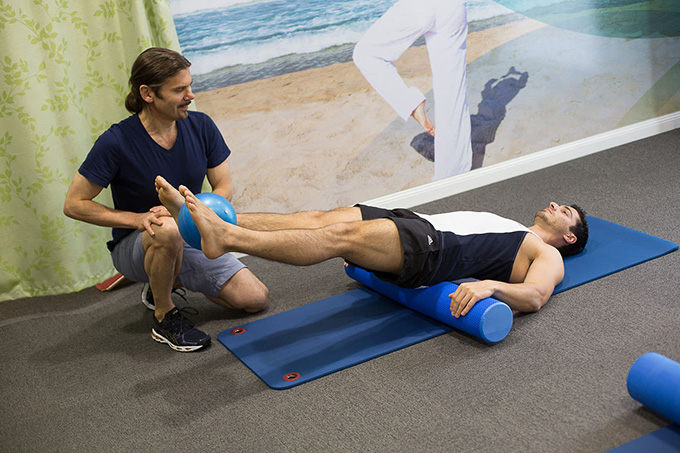Recently, there has been a rising trend in the fitness arena, with foam rollers becoming part of almost everyone’s exercise program. In fact, from the average $3.18 billion of home exercise equipment sales in the United States over the last 15 years, 87% of suppliers were offering foam rollers. There is certainly a growing demand, but do they actually work?
Physiotherapy and the Hippocratic Oath
As a Masters level physiotherapist, Tim Ellis, Managing Director at Excel Physiotherapy and Wellness, cannot simply jump on the latest exercise bandwagon without assessing the potential risks as well as its benefits first. As a physio, there is also the Hippocratic oath to follow, which is ‘first do no harm’. And so he began his research on foam rollers, also called myofascial rollers.
Practical Advantages of the Foam Roller
Part of Tim’s research was observing personal trainers as they and their clients use the foam roller. He noticed that although there would usually be a wince of pain on their faces as they roll, there would also be a sense of relief once they’re done. He also observed that after using the foam roller, these trainers and their clients looked straighter and more upright once they stood up.

Testing the Foam Roller
Tim eventually tried the foam roller himself. After trying it for the first time, he was sold. He instantly felt its benefits after rolling his outer thigh for just two minutes. He was able to squat and bend on his sides more easily. He then rolled the tight pecs and posterior shoulder muscles and after which, he was able to lift heavier weights without clicking or any feeling any discomfort.
After a few months of experiencing the benefits of the foam roller himself, Tim then started to include a few foam roller exercises during his physiotherapy sessions with patients and they, too, were amazed by its benefits. When used properly, the foam roller is a great tool for improving range of motion and also for controlling core stability, balance, and proprioception.
Researched-Backed Benefits of the Foam Roller
According to a review of 14 eligible, quality studies published in the International Journal of Sports Physical Therapy in 2015, “The current literature measuring the effects of SMR is still emerging. The results of this analysis suggest that foam rolling and roller massage may be effective interventions for enhancing joint ROM and pre and post exercise muscle performance.” For any skeptic, this review provides objective and factual information that proves the foam roller to be a good tool for improving one’s physical health.
Aside from Tim’s personal experience using the foam roller himself and on his patients, this study confirms that this tool is truly effective and beneficial for everyone as long as it is used the right way. So, if you are considering buying one, make sure to learn the proper way to use it or better yet, seek the help of a physio or personal trainer so you can be given the guidance you need during your first few tries of the foam roller.
Tim Ellis is the Principal Physiotherapist at Excel Physiotherapy and Wellness in Mascot, New South Wales, Australia. He specialises in treating complex necks and backs and developing highly effective exercise programs for his patients. Tim is committed to integrative health, healthy eating, exercise, and life long learning which he shares through his blogs.
